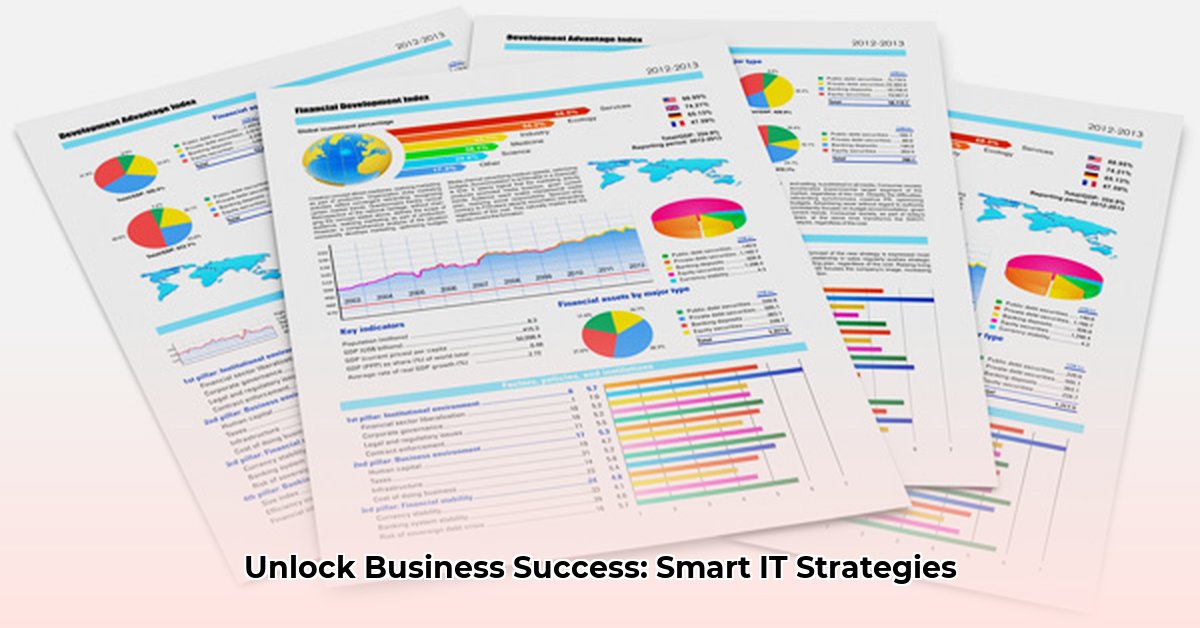
This guide provides a straightforward plan for creating a winning IT strategy. We'll cover the essentials, step-by-step actions, and long-term thinking to ensure your tech investments directly support your company's goals. Think of it as a roadmap to success, not a complicated technical manual. Developing a robust IT strategy is crucial for navigating today's dynamic business landscape. How can you ensure your technology investments directly contribute to your bottom line?
Setting the Stage: Defining Your Business Goals
Before diving into the technical details, we need to understand your business objectives. What are your short-term and long-term aspirations? What challenges are preventing you from achieving these goals? How can technology help you overcome these obstacles and unlock new opportunities? Your IT strategy isn't a standalone entity; it's a tool designed to help you achieve your objectives.
The Building Blocks of a Successful IT Strategy
Let's define the essential components of a winning IT strategy:
Business Alignment: Your technology plan must directly support your overall business goals. It's not about adopting the latest technology for technology's sake; it's about leveraging technology to boost efficiency, increase profitability, and enhance your competitive edge.
Long-Term Vision: Avoid short-sighted planning. Consider your business's trajectory over the next three to five years, even ten years. A flexible IT strategy can adapt to this evolving landscape, ensuring your investments remain relevant and valuable well into the future.
Technology Roadmap: This is your detailed action plan – a step-by-step guide outlining specific projects, timelines, budgets, and key milestones. This roadmap provides the "how" to achieve your IT strategy's objectives.
Key Performance Indicators (KPIs): How will you measure the success of your IT investments? KPIs provide quantifiable metrics to track progress and identify areas needing improvement. Regular monitoring and analysis are essential to optimizing your strategy.
Governance: This encompasses the rules and processes governing IT decision-making, resource allocation, and risk management. Strong governance ensures accountability and prevents potential issues.
Actionable Steps: Putting Your IT Strategy into Action
Here's a practical, step-by-step approach to implementing your IT strategy:
Take Stock: Begin by assessing your existing IT infrastructure. Identify strengths, weaknesses, and areas needing improvement. This comprehensive assessment forms the foundation for your strategic planning.
Set Clear Goals: Define specific, measurable, achievable, relevant, and time-bound (SMART) IT objectives directly aligned with your overall business goals. What specific problems will be solved? What opportunities will be created?
Create Your Roadmap: Develop a detailed roadmap that outlines individual projects, timelines, budget allocations, and responsible parties. This roadmap provides clarity and structure to your IT implementation.
Establish KPIs: Choose relevant KPIs to measure the effectiveness of your IT investments. These metrics will track progress toward your goals and enable data-driven decision-making. Examples include reduced operational costs, improved customer satisfaction, or increased sales conversion rates.
Implement and Adapt: Put your plan into action, monitoring progress closely. Be prepared to adjust your strategy based on performance data and changing business needs. Flexibility and adaptability are key to long-term success.
Working Together: Crucial Stakeholder Engagement
Effective IT strategy requires collaboration among various stakeholders:
| Stakeholder Group | Short-Term Actions (0-1 Year) | Long-Term Strategies (3-5 Years) |
|---|---|---|
| CIO/IT Leadership | Develop a concise IT strategy; Address any crucial organizational gaps; Set clear benchmarks. | Define a complete multi-year tech plan; Build a culture of continuous improvement and adaptation. |
| Business Units | Work with IT to prioritize initiatives. | Use IT to boost efficiency and find new business opportunities. |
| IT Department | Improve service quality; Improve internal communication. | Invest in employee training; Adopt industry best practices; Focus on automation where possible. |
Open communication and collaboration among these groups ensure alignment and maximize the impact of your IT strategy.
How to Align IT Strategy with Business Objectives and KPIs
Key Takeaways:
- A successful IT strategy begins with a clear understanding of your business objectives.
- Strategic planning must be complemented by agile adaptation to changing circumstances.
- Consistent communication and collaboration between IT and business units are essential.
- KPIs provide measurable metrics to track progress and inform ongoing adjustments.
- Proactive risk management is vital for long-term success.
Step 1: Define Clear Business Objectives
Before focusing on technology, clearly define your business goals—both short-term and long-term. What are your key performance metrics? What specific improvements are you aiming for? These goals will guide your IT strategy.
Step 2: Conduct a Thorough IT Assessment
Assess your current IT infrastructure. Analyze your systems' efficiency, security, and scalability. Identify gaps between your current capabilities and your future needs. This assessment will highlight areas needing investment or improvement.
Step 3: Develop a Phased Implementation Plan
Prioritize initiatives based on their impact and feasibility. Begin with projects directly supporting your key business objectives. Maintain flexibility to respond to changing circumstances.
Step 4: Establish Key Performance Indicators (KPIs)
Choose KPIs that directly measure the success of your IT investments against your defined business objectives. Regularly monitor these KPIs to track progress and make necessary adjustments.
Step 5: Foster Collaboration and Communication
Open communication between IT and business units is critical. Regular meetings and transparent reporting foster collaboration and ensure your IT investments consistently support business needs.
Step 6: Address Potential Risks
Anticipate and mitigate potential risks, such as technology obsolescence, budget constraints, resistance to change, or security vulnerabilities.
Step 7: Ongoing Monitoring and Adjustment
Your IT strategy is not static. Regularly review your KPIs and adapt your strategy based on performance data and business feedback. Continuous improvement is essential.